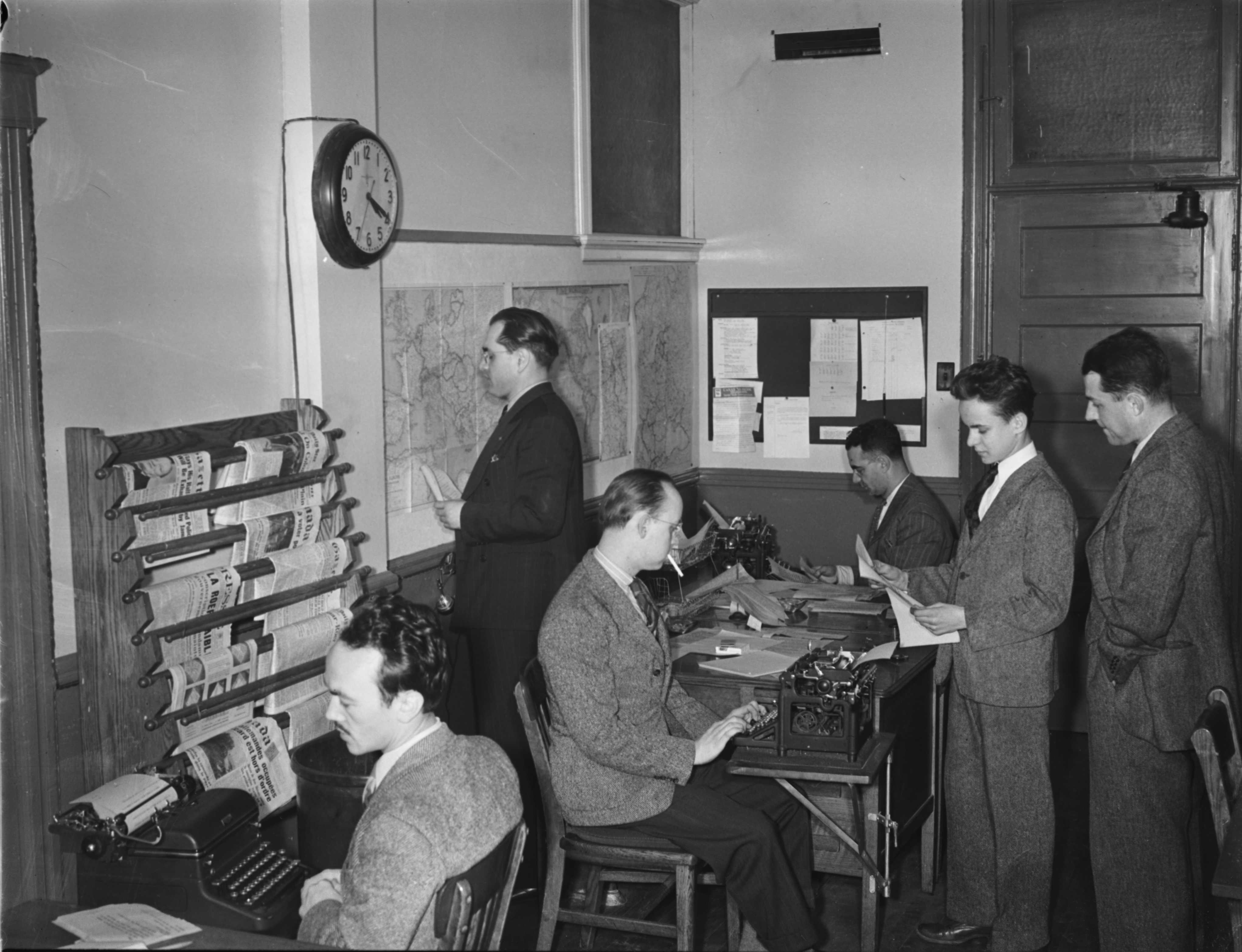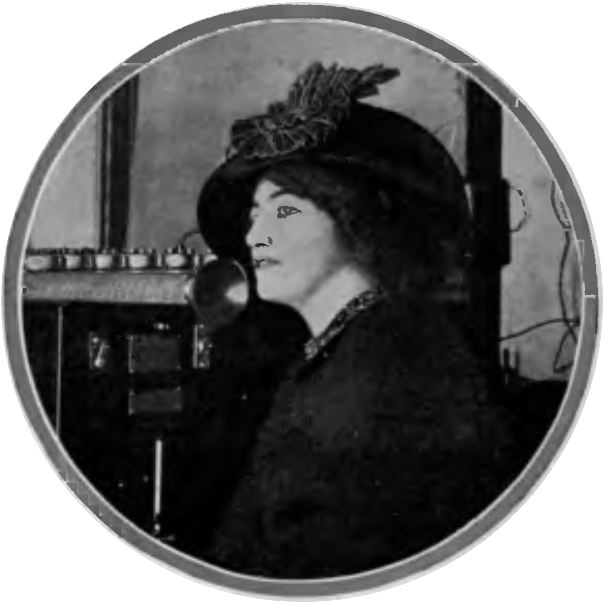|
CHRM-FM
CHRM-FM is a French-language Canadian radio station located in Matane, Quebec. Owned and operated by Les Communications Matane Inc., it broadcasts on 105.3 MHz using an omnidirectional antenna with an effective radiated power of 30,000 watts ( class B). CHRM-FM also operates a relay, CHRM-FM-1 in Les Méchins which operates on 91.3 MHz using a directional antenna with an average effective radiated power of 23 watts and a peak effective radiated power of 49 watts ( class LP). The station has an adult contemporary format, and has occasionally had some talk programming and sports play-by-play. Originally known as CHRM when the station was on the AM band on 1290 kHz, the station moved to FM in 2001. CHRM went on the air on April 13, 1975 and was the first local private radio service in Matane since CKBL (now CBGA-FM) was bought by Radio-Canada The Canadian Broadcasting Corporation (french: Société Radio-Canada), branded as CBC/Radio-Canada, is a Canadian public broa ... [...More Info...] [...Related Items...] OR: [Wikipedia] [Google] [Baidu] |
CHOE-FM
CHOE-FM is a French-language Canadian radio station located in Matane, Quebec. Owned and operated by Les Communications Matane Inc., it broadcasts on 95.3 MHz ( FM) using an omnidirectional antenna with an effective radiated power of 14,600 watts ( class B). The station has a hot adult contemporary format. It is the sister station of CHRM-FM. External links www.choefm.com- CHOE 95.3 FM * Decision CRTC 90-356* Hoe Hoe Hoe Hoe or HOE may refer to: * Hoe (food), a Korean dish of raw fish * Hoe (letter), a Georgian letter * Hoe (tool), a hand tool used in gardening and farming ** Hoe-farming, a term for primitive forms of agriculture * Backhoe, a piece of excavati ... Matane Year of establishment missing {{Quebec-radio-station-stub ... [...More Info...] [...Related Items...] OR: [Wikipedia] [Google] [Baidu] |
Matane
Matane is a town on the Gaspé Peninsula in Quebec, Canada, on the south shore of the Saint Lawrence River at the mouth of the Matane River. The town is the seat for the La Matanie Regional County Municipality. In addition to Matane itself, the town's territory also includes the communities of Petit-Matane and Saint-Luc-de-Matane. There is a ferry service which crosses the river to Baie-Comeau and Godbout on the north shore as well as a rail ferry service to Baie-Comeau and Sept-Îles. Etymology The name Matane was first assigned to the river by Samuel de Champlain as "''Mantanne''" in 1603. Its meaning is open to different interpretations, with the most common one being that it comes from the Mi'kmaq word ''mtctan'' meaning "beaver pond", since the region had an abundant beaver population. It could also be a Maliseet word for "spinal cord", referring to the course of the Matane River; or from the word ''Mattawa''/''Matawin'', meaning "meeting of the waters". Finally, i ... [...More Info...] [...Related Items...] OR: [Wikipedia] [Google] [Baidu] |
Directional Antenna
A directional antenna or beam antenna is an antenna which radiates or receives greater power in specific directions allowing increased performance and reduced interference from unwanted sources. Directional antennas provide increased performance over dipole antennas—or omnidirectional antennas in general—when greater concentration of radiation in a certain direction is desired. A high-gain antenna (HGA) is a directional antenna with a focused, narrow radiowave beam width, permitting more precise targeting of the radio signals. Most commonly referred to during space missions, these antennas are also in use all over Earth, most successfully in flat, open areas where there are no mountains to disrupt radiowaves. By contrast, a low-gain antenna (LGA) is an omnidirectional antenna with a broad radiowave beam width, that allows the signal to propagate reasonably well even in mountainous regions and is thus more reliable regardless of terrain. Low-gain antennas are often used ... [...More Info...] [...Related Items...] OR: [Wikipedia] [Google] [Baidu] |
French-language Radio Stations In Quebec
French ( or ) is a Romance language of the Indo-European family. It descended from the Vulgar Latin of the Roman Empire, as did all Romance languages. French evolved from Gallo-Romance, the Latin spoken in Gaul, and more specifically in Northern Gaul. Its closest relatives are the other langues d'oïl—languages historically spoken in northern France and in southern Belgium, which French ( Francien) largely supplanted. French was also influenced by native Celtic languages of Northern Roman Gaul like Gallia Belgica and by the ( Germanic) Frankish language of the post-Roman Frankish invaders. Today, owing to France's past overseas expansion, there are numerous French-based creole languages, most notably Haitian Creole. A French-speaking person or nation may be referred to as Francophone in both English and French. French is an official language in 29 countries across multiple continents, most of which are members of the '' Organisation internationale de la Francophon ... [...More Info...] [...Related Items...] OR: [Wikipedia] [Google] [Baidu] |
Soft Adult Contemporary Radio Stations In Canada
Soft may refer to: * Softness, or hardness, a property of physical materials Arts and entertainment * ''Soft!'', a 1988 novel by Rupert Thomson * Soft (band), an American music group * ''Soft'' (album), by Dan Bodan, 2014 * Softs (album), by Soft Machine, 1976 * "Soft", a song by Kings of Leon on the 2004 album ''Aha Shake Heartbreak'' * "Soft"/"Rock", a 2001 single by Lemon Jelly Other uses * Sorgenti di Firenze Trekking (SOFT), a system of walking trails in Italy * Soft matter, a subfield of condensed matter * Magnetically soft, material with low coercivity * Soft skills, a person's people, social, and other skills * Soft commodities, or softs *A flaccid penis, the opposite of "hard" See also * * * Softener (other) Softener may refer to: * Fabric softener, a conditioner that is typically applied to laundry during the rinse cycle in a washing machine. * Stool softener, anionic surfactants that enable additional water and fats to be incorporated in the stool, .. ... [...More Info...] [...Related Items...] OR: [Wikipedia] [Google] [Baidu] |
Radio Stations In Bas-Saint-Laurent
Radio is the technology of signaling and communicating using radio waves. Radio waves are electromagnetic waves of frequency between 30 hertz (Hz) and 300 gigahertz (GHz). They are generated by an electronic device called a transmitter connected to an antenna which radiates the waves, and received by another antenna connected to a radio receiver. Radio is very widely used in modern technology, in radio communication, radar, radio navigation, remote control, remote sensing, and other applications. In radio communication, used in radio and television broadcasting, cell phones, two-way radios, wireless networking, and satellite communication, among numerous other uses, radio waves are used to carry information across space from a transmitter to a receiver, by modulating the radio signal (impressing an information signal on the radio wave by varying some aspect of the wave) in the transmitter. In radar, used to locate and track objects like aircraft, ships, spacecraft a ... [...More Info...] [...Related Items...] OR: [Wikipedia] [Google] [Baidu] |
Canadian Broadcasting Corporation
The Canadian Broadcasting Corporation (french: Société Radio-Canada), branded as CBC/Radio-Canada, is a Canadian public broadcaster for both radio and television. It is a federal Crown corporation that receives funding from the government. The English- and French-language service units of the corporation are commonly known as CBC and Radio-Canada, respectively. Although some local stations in Canada predate the CBC's founding, CBC is the oldest existing broadcasting network in Canada. The CBC was established on November 2, 1936. The CBC operates four terrestrial radio networks: The English-language CBC Radio One and CBC Music, and the French-language Ici Radio-Canada Première and Ici Musique. (International radio service Radio Canada International historically transmitted via shortwave radio, but since 2012 its content is only available as podcasts on its website.) The CBC also operates two terrestrial television networks, the English-language CBC Television and the F ... [...More Info...] [...Related Items...] OR: [Wikipedia] [Google] [Baidu] |
CBGA-FM
CBGA-FM is a French-language Canadian radio station located in Matane, Quebec. Owned and operated by Société Radio-Canada, it broadcasts on 102.1 MHz with an effective radiated power of 42,930 watts ( class C1) using an omnidirectional antenna. The station has a non-commercial news/talk format and is part of the Ici Radio-Canada Première network, which operates across Canada. Like all other Première stations, but unlike most FM stations, CBGA-FM broadcasts in mono. Previously known as CBGA when the station was on 1250 kHz, the station moved to 102.1 FM in 2004. The station was founded in 1948 as CKBL and changed its call sign when it was bought by Radio-Canada in 1972. The station's current local programs are ''Bon pied, bonne heure !'', in the mornings from 6 a.m. to 9 a.m., and ''Au coeur du monde'' in the afternoons, 3:30 p.m. to 6 p.m. CBGA-FM also co-produces ''D'Est en est'', a pan-regional program produced in turn with CJBR-FM Rimouski and CBSI-FM Sept-Îles ... [...More Info...] [...Related Items...] OR: [Wikipedia] [Google] [Baidu] |
FM Broadcasting
FM broadcasting is a method of radio broadcasting using frequency modulation (FM). Invented in 1933 by American engineer Edwin Armstrong, wide-band FM is used worldwide to provide high fidelity sound over broadcast radio. FM broadcasting is capable of higher fidelity—that is, more accurate reproduction of the original program sound—than other broadcasting technologies, such as AM broadcasting. It is also less susceptible to common forms of interference, reducing static and popping sounds often heard on AM. Therefore, FM is used for most broadcasts of music or general audio (in the audio spectrum). FM radio stations use the very high frequency range of radio frequencies. Broadcast bands Throughout the world, the FM broadcast band falls within the VHF part of the radio spectrum. Usually 87.5 to 108.0 MHz is used, or some portion thereof, with few exceptions: * In the former Soviet republics, and some former Eastern Bloc countries, the older 65.8–74 M ... [...More Info...] [...Related Items...] OR: [Wikipedia] [Google] [Baidu] |
AM Broadcasting
AM broadcasting is radio broadcasting using amplitude modulation (AM) transmissions. It was the first method developed for making audio radio transmissions, and is still used worldwide, primarily for medium wave (also known as "AM band") transmissions, but also on the longwave and shortwave radio bands. The earliest experimental AM transmissions began in the early 1900s. However, widespread AM broadcasting was not established until the 1920s, following the development of vacuum tube receivers and transmitters. AM radio remained the dominant method of broadcasting for the next 30 years, a period called the " Golden Age of Radio", until television broadcasting became widespread in the 1950s and received most of the programming previously carried by radio. Subsequently, AM radio's audiences have also greatly shrunk due to competition from FM (frequency modulation) radio, Digital Audio Broadcasting (DAB), satellite radio, HD (digital) radio, Internet radio, music streaming se ... [...More Info...] [...Related Items...] OR: [Wikipedia] [Google] [Baidu] |
Play-by-play
In sports broadcasting, a sports commentator (also known as sports announcer or sportscaster) provides a real-time commentary of a game or event, usually during a live broadcast, traditionally delivered in the historical present In linguistics and rhetoric, the historical present or historic present, also called dramatic present or narrative present, is the employment of the present tense when narrating past events. It is widely used in writing about history in Latin ( ... tense. Radio was the first medium for sports broadcasts, and radio commentators must describe all aspects of the action to listeners who cannot see it for themselves. In the case of televised sports coverage, commentators are usually presented as a voiceover, with images of the contest shown on viewers' screens and sounds of the action and spectators heard in the background. Television commentators are rarely shown on screen during an event, though some networks choose to feature their announcers on camer ... [...More Info...] [...Related Items...] OR: [Wikipedia] [Google] [Baidu] |






.jpg)